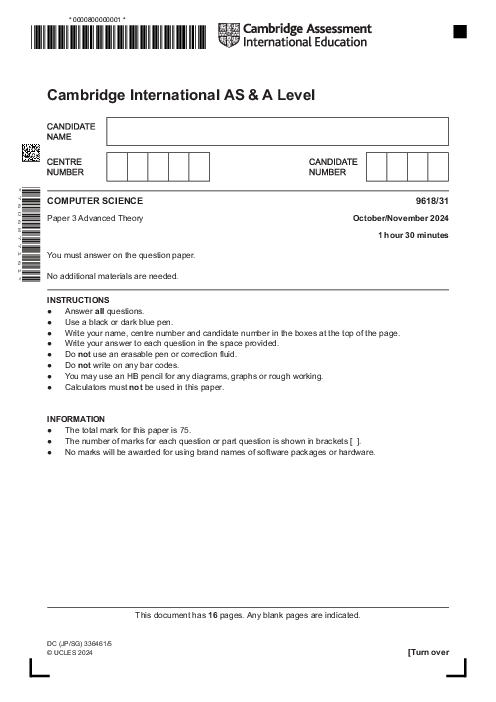Computer Science 9618,31 Oct Nov 2024
Laura Bellini
1. Binary Floating-Point Representation | Normalization & Denary Conversion – Converting between binary floating-point and denary using two’s complement representation.
2. Processor Architecture | RISC Features & Performance Characteristics – Identifying reduced instruction set computing (RISC) properties and their impact on processing efficiency.
3. Networking & Data Transmission | Circuit Switching & Its Trade-offs – Explaining circuit switching, its benefits (consistent bandwidth) and drawbacks (resource wastage).
4. TCP/IP Model & Protocol Layering | Interaction Between Networking Layers – Describing data flow from the application layer to the link layer and their interdependencies.
5. Hashing & Collision Resolution | Efficient Data Storage Techniques – Defining hashing in file access and outlining methods (chaining, open addressing) to handle collisions.
6. Data Structures & Sets | Declaring & Using Sets in Programming – Writing pseudocode to declare a set data type and initializing mathematical operator symbols.
7. Boolean Algebra & Logic Optimization | Sum-of-Products & Karnaugh Maps – Constructing a Boolean expression, filling in a Karnaugh map, and simplifying using Boolean algebra.
8. Memory Management & Performance | Segmentation & Disk Thrashing – Describing segmentation for memory allocation and explaining disk thrashing due to excessive page swaps.
9. Object-Oriented Design | Class Structure for Pet Records – Defining attributes, encapsulation, and class methods for pet registration and data retrieval.
10. Syntax Representation | Backus-Naur Form (BNF) & Syntax Diagrams – Writing BNF rules and drawing syntax diagrams for structured data validation.
11. Binary Tree & Linked List Implementation | Data Storage & Search Algorithms – Representing a binary tree using linked lists and implementing a tree search function in pseudocode.
See More Paper 3 10 months ago
Computer Science (9618) Subject directory
All resources in one place
Related Past Papers
Related Tutorials
Crash report
